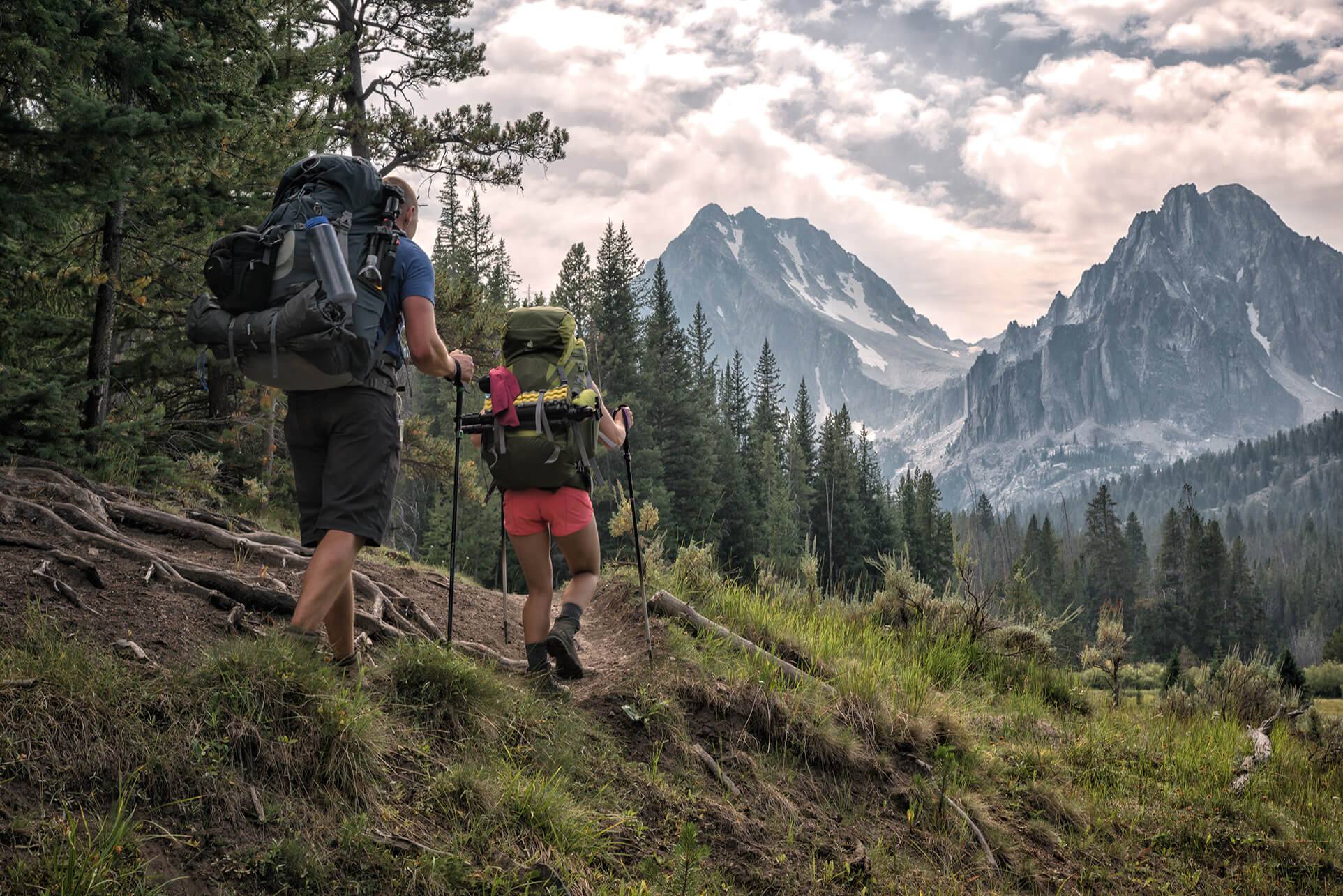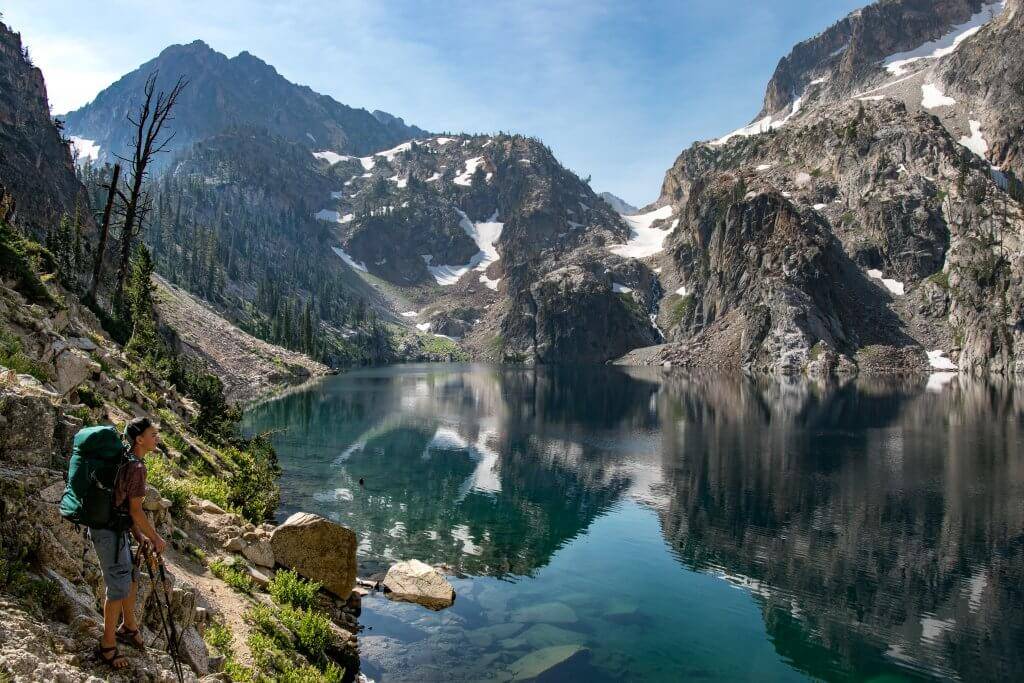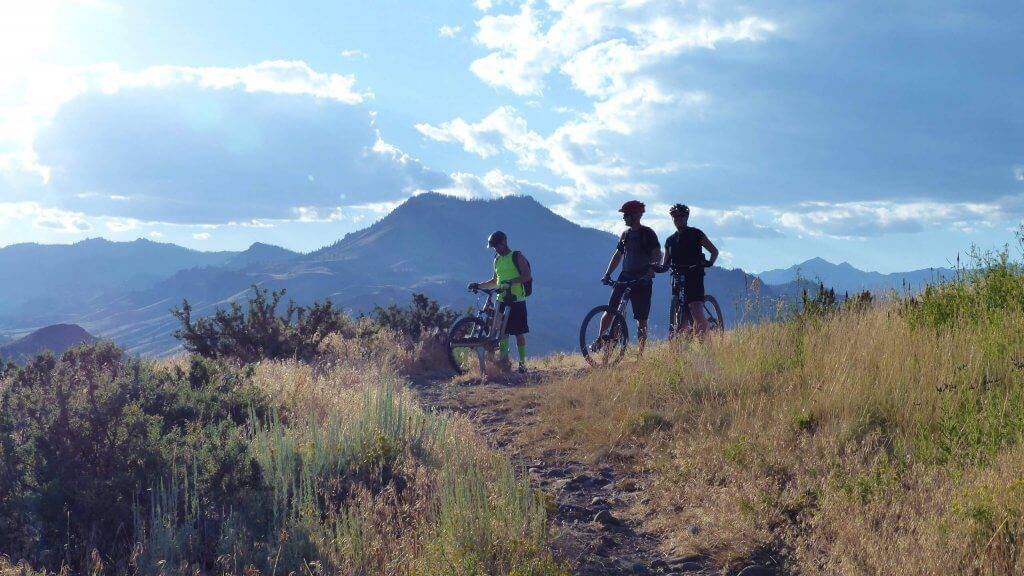This is a sponsored post.
When I first set foot on the Little Boulder Trail, en route to what I was convinced would be an alpine paradise, I must admit I was somewhat skeptical. The long, narrow, winding road we’d taken from the highway near Stanley to the trailhead had wended its way through an arid, dusty valley dotted with artificially irrigated farms—islands of verdant green amid an otherwise tawny hillscape–with nary a sight of a snowcapped peak or alpine lake. But I had faith that, as usual, Idaho would deliver the goods and we began the steep ascent into the foothills, flanked by head-high sagebrush and the occasional ponderosa pine.
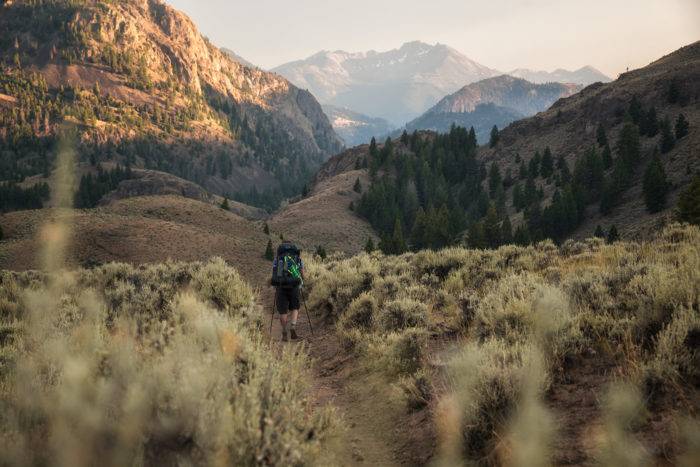
The trail quickly gained several hundred feet inserting us into a wild-west scene straight out of a cowboy movie, complete with wranglers leading a pack train into the hills ahead of us. The flora gradually changed as we plodded along the 8.5-mile path to our first night’s camp. Desert shrubs and grasses gave way to denser stands of pine and Ponderosa began to mix with Lodgepole and Douglas Fir. The river running down a steep embankment to our right became choked with alder and aspen and the occasional cottonwood, but eventually reemerged in an open marshland as we gained our first views of Castle and Merriam Peaks to the west.
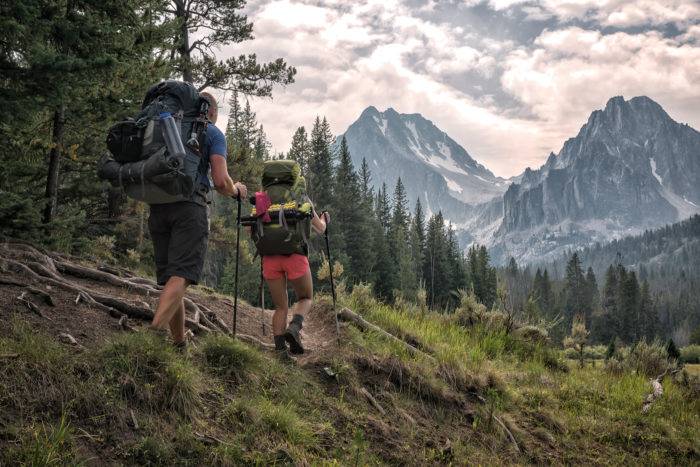
Around seven miles in we forked right at a trail junction and began our ascent up into the Boulder Chain Lakes Basin, a narrow, winding valley speckled with dozens of alpine lakes lined with craggy, daunting peaks. We settled down at Hatchet Lake for our first night on the trail, finding a shady spot along the northern shore. Cardiac Peak dominated the skyline above the lake giving us ample jaw-dropping views during a brisk afternoon swim. After the sun had set, the Milky Way rose directly above Cardiac’s summit and we watched it roll across the sky in the absence of moonlight.
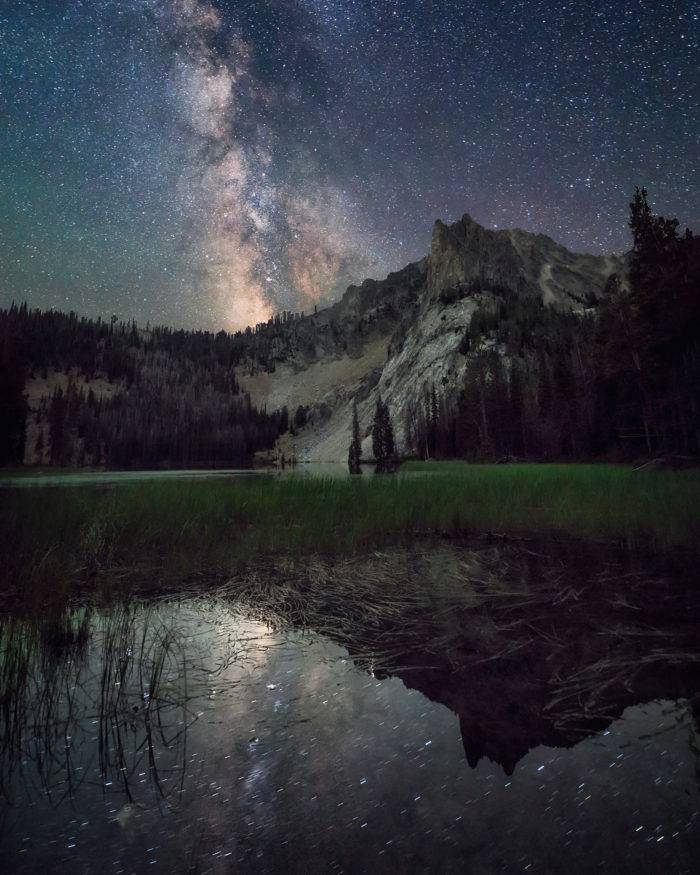
The next morning we continued our trek up the valley, passing a handful of equally stunning lakes, working our way towards the terminus of the moraine. The crux of our day was Windy Devil: a chossy talus slope leading up to a windswept saddle on the ridge dividing the Boulder Chain Lakes Basin from the Slickenslide Creek Basin to the south. Stopping for lunch on the bank of Hummock Lake, we topped off our water bottles and ate a quick lunch, admiring the abundant Idaho sunshine sparkling on the water’s surface. Giant White Bark Pines leaned over the water’s edge, considered to be some of the oldest specimens in the world. Years of trauma and triumph could be seen on their trunks and roots. Then, we began our climb.
Ascending Windy Devil is strenuous, but mercifully short. Only a handful of switchbacks crisscross the slope and the 800 feet of gain is accomplished relatively quickly. Once atop the ridge, we turned back to see a mountain goat ascending a steep scree field across the valley. Looking south from the saddle, Merriam and Castle Peaks engulfed the horizon, towering over a smattering of alpine lakes far below us. The vicious-looking Serrate Ridge connecting the two massifs seesawed across our purview, reminiscent of an EKG readout. Cutting right along the slope to the north, we worked our way quickly over the shoulder of the nearest mountain and into a broad basin anchored around a small tarn. Here, with unobstructed views of Castle and Merriam, we set up camp in a wildflower-dotted meadow for our second night.
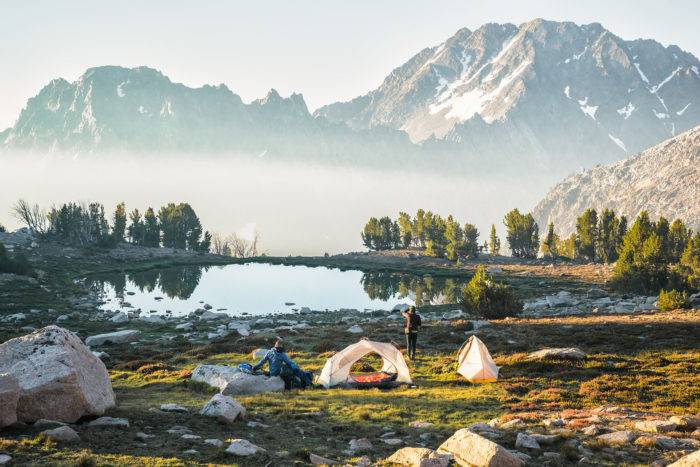
Regardless of where you choose to camp, relaxing in the warm alpine afternoon sun in the Sawtooths is a heavenly experience. A cool breeze rolled over the surrounding ridges and rippled the water on the tarn beside which we’d set our tents. It was difficult to summon the energy to do anything except laze and gaze up at the azure sky. When the sun began to set the surrounding peaks and ridgelines all lit up in an ever-deepening shade of crimson. Whatever wispy clouds flitted by overhead sank into cotton-candy pink. Once again, after sunset, the moonless sky was bisected, horizon to horizon, by the Milky Way.
Sunrise was equally stunning and even more dramatic with a low layer of wildfire smoke that had backed into the valley below overnight.
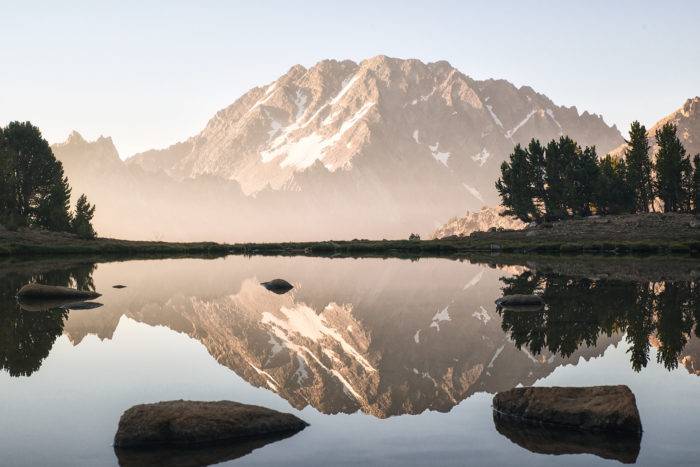
Packing up, we headed down into the Slickenslide Creek drainage, following a faint track down into the valley where we found Noisy Lake (presumably so named for the gurgling waterfall dropping into southeast corner of the lake). The turquoise waters were too tempting and we succumbed, leaping from rocks into the breathtakingly freezing depths. It was a perfect refresher to prepare us for the rough and tumble descent down Slickenslide Creek. At times, the trail was straightforward and level, passing by the creek as it gently drained through grassy meadows, chock full of trout, wide and lethargic. Other times the path rambled up and down through narrow canyons or down slick, loose faces as the river fell swiftly and violently to the lakes below. Dozens of blowdowns slowed our progress, but the overwhelming beauty and solitude of the trail through this area kept our spirits high.
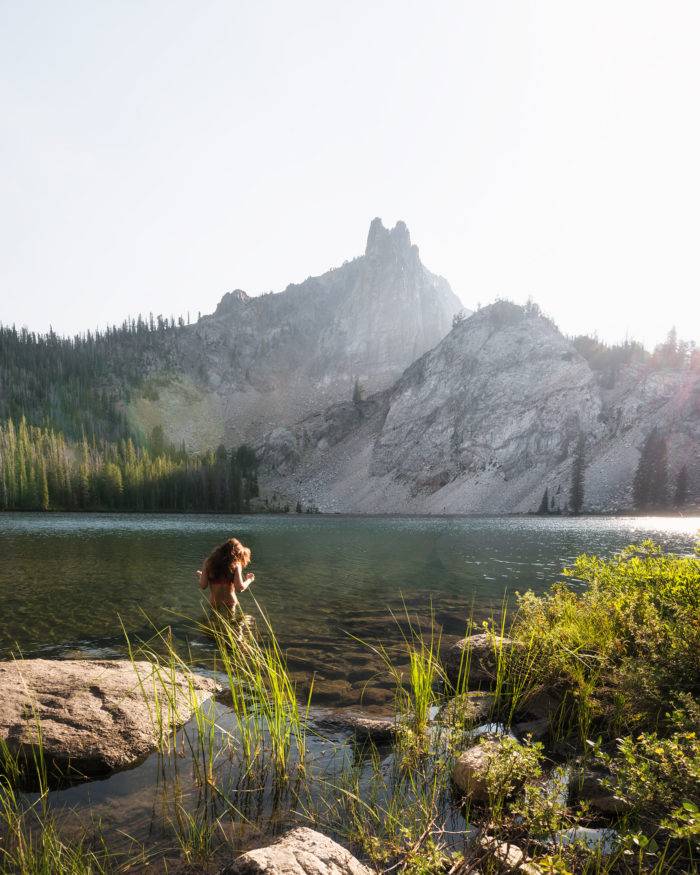
Finally, the trail deposited us in a marshy meadow and we eventually rejoined the main trail on which we’d entered the wilderness. The last seven miles were as marvelous as they’d been on our way in and we made short work of them, only pausing periodically to take a drink from the ice cold waters of Little Boulder Creek. Alpine landscapes transformed again to desert, and sagebrush overtook forest as we descended back to the trailhead, arriving just as the sun set over the golden hills around us. Our timing was spot-on for a quick jaunt back to Stanley for a burger and a pint at the Mountain Village Restaurant and Saloon.
Stanley and the Sawtooths are the optimal combination of charming and rugged, offering just enough amenities to be the ideal way station between adventures, but nestled so perfectly between picturesque peaks and rivers so that you’re constantly reminded of all the magnificent outdoors opportunities at your fingertips. While we sat and sipped lattes at Stanley Baking Company, fueling up for our trip back to Seattle, we eyed the peaks around us, picking out lines and summits for our next adventures, already planning our return trip in our heads.
Feature image credited to Nick Lake.
Nick Lake is a freelance photographer, writer, and videographer living in Seattle, Washington. He loves to tell stories about adventures in the outdoors and you can usually find him in the mountains hiking or skiing with his wife and puppy. Follow his adventures on his Website, Instagram, and Facebook.
Published on September 28, 2017

